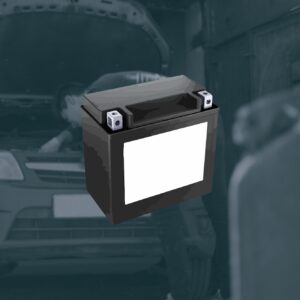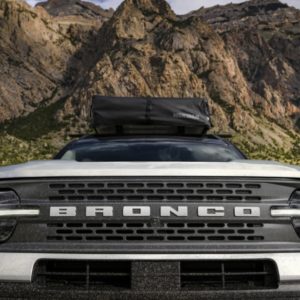A crossmember might not be the first thing on your mind when it comes to suspension components, but it does play a huge part in your vehicle’s drivability.
What Is a Crossmember on a Car?
A crossmember is a steel or aluminum bar that runs across the vehicle to support the transmission. It’s strong enough to resist twisting and deflection, bearing the forces and torque of the transmission.
Typically linked to the engine mount, the crossmember also keeps the suspension system stable. In some transverse engines, the transmission mount can also be mounted to the subframe.
In some transverse engines, the transmission mount can also be mounted to the subframe.
–Anthony Harlin, ASE Certified Master Automobile Technician
A car’s front crossmember also has load-bearing capacities for towing functions. It was originally made with 5 meters of weld length, but extreme heat is most likely to affect its final dimensions.
A crossmember is usually part of vehicles with a unibody design. These vehicles have the body constructed with the structure of the frame.

Symptoms of a Damaged Crossmember
A damaged crossmember can cause your vehicle to exhibit the following symptoms:
- Creaking or squeaking noises from the chassis
- Abnormal gaps in door openings
- Uneven tire wear
- Misaligned wheels
- Additional force to the doors
- Drivability and shifting issues
Driving With a Damaged Crossmember
You’re bound to experience a few drivability issues when you have a damaged crossmember.
The damaged component can throw the wheel alignment off, making it difficult to drive straight.
The crossmember is also a supporting component. Without it, the coils, struts, and shock towers could get bent and wear out prematurely. The transaxle is also at risk of getting twisted.
Crossmember Replacement
The cost to replace a damaged crossmember will mostly depend on factors like your vehicle’s specifications, the crossmember’s brand, material, location, and finish.
Crossmembers vs. Subframes
Both the crossmember and subframe play critical roles in supporting major engine and transmission components, and both are essential suspension system parts.
However, the crossmember is a smaller structure than the subframe (depending on whether the engine is transverse or longitude-mounted), and its main priority is to support the transmission.
Meanwhile, the subframe supports the axle, suspension, and powertrain. It’s also referred to as the “cradle.”
The subframe also acts as a mount structure in the suspension, reacting to cornering, driving over bumps, accelerating, and braking.
A subframe can be found in the front, rear, or both sides.
Other Suspension System Parts and Principles
Most drivers know about the shocks, struts, anti-roll bars, and ball joints. But there’s actually more to the suspension system than these parts.

Let’s take a look at some of the other components and principles in the suspension system.
Frames
The suspension system supports the vehicle’s weight. The frame is the part that carries the vehicle’s running gear, which includes the engine, transmission, axle assembly, and other suspension parts.
Types of Frames
Some types of frames you might find in various vehicles are the ladder, perimeter, and subframe.
Ladder Frame
This frame resembles a ladder and has straight transverse connecting members. Most pickup trucks have a ladder-type frame.
Perimeter Frame
This frame runs across the entire vehicle’s perimeter. It has welded or riveted frame members supporting the underside and several suspension parts.
Subframe
A subframe is a partial frame typically found in unibody vehicles. It’s usually found in front-wheel drive (FWD) vehicles.
Frame Construction Types
There are generally two ways frames are constructed.
Unibody Construction
A unibody supports the engine, driveline, steering, and suspension components. Vehicles with a unibody design usually have 300 spot-welded stamped steel panels.
Space Frame Construction
A space frame is made from formed sheet steel to construct the vehicle’s entire framework. Vehicles with a space frame can be driven without the body.
Platforms
The platform refers to the vehicle’s base size and shape.
For a unibody vehicle, the platform includes all major sheet metal components that make up the vehicle’s load-bearing structure. The bulkhead is also within the platform. It separates the engine compartment from the passenger compartment.
Unsprung Weight

Unsprung weight is the weight of the components that move up and down. The lighter it is, the better the handling and ride, so it’s best to keep the unsprung weight as low as possible.
In contrast, sprung weight refers to the vehicle’s weight that doesn’t move at all. These parts are sprung or supported by the suspension.
Hooke’s Law
All suspension systems follow Hooke’s Law, which states that the deflection of a spring is directly proportional to the applied force.
According to this law, every time a coil spring is depressed to a specific measurement, it pushes back with a certain force in pounds.
Springs have a constant spring rate or force, which is constant to the force per unit of displacement. The higher the spring rate, the stiffer the spring.
Transverse Wheel Support
Suspension systems must provide a transverse of side-to-side wheel support and prevent the wheels from moving away from the vehicle or inward toward the center of the vehicle.
Longitudinal Wheel Support
Suspension systems should also provide the vehicle with front-to-back wheel support, which prevents the wheels from moving backward whenever the vehicle is driven over bumps.
Anti-Squat and Anti-Dive Design Factors
Suspension systems must feature anti-squat and anti-dive factors for proper vehicle handling.
Anti-squat is the body’s reaction whenever the vehicle accelerates. Most vehicles squat down at the rear as it speeds up. If the suspension system is made with 100% anti-squat capabilities, it would remain level even as it accelerates.
Meanwhile, anti-dive refers to the force that causes the vehicle’s front to drop when the brakes are applied. Similar to anti-squat properties, a vehicle with a 100% anti-dive characteristic would cause it to remain perfectly level while braking.
In most cases, a little squat or dive feels normal for drivers, provided that they have shocks or struts that are in good working order. Weak struts can lead to excessive squatting or diving.
Where to Get a New Crossmember for Your Vehicle
The crossmember keeps the suspension system stable, so it’s not advised to drive with a damaged one since it may cause drivability issues. As soon as your mechanic recommends it, you should replace the faulty component as soon as possible. With CarParts.com, shopping online for the right crossmember has never been easier.
Our easy-to-navigate website allows you to browse our catalog of auto parts on your mobile devices. This means you can also place your orders in the comfort of your home. We also have a built-in vehicle selector that lets you input your ride’s year, make, and model to check for fitment.
We stand by the quality of our products. But to give you added peace of mind, we accept 60-day returns and offer a lifetime replacement guarantee for qualified products.
Shop and order a new crossmember for your vehicle today!
Any information provided on this Website is for informational purposes only and is not intended to replace consultation with a professional mechanic. The accuracy and timeliness of the information may change from the time of publication.






























Just ordered some parts and wanted the tailgate latch also and it said not available, so placed order-cpz232321202870704 – and don’t ya know it shows up on ur welcome to the website thingy ? with a discount etc etc, is it available?